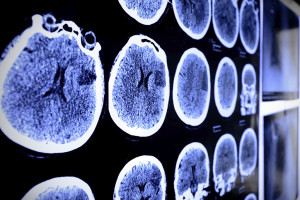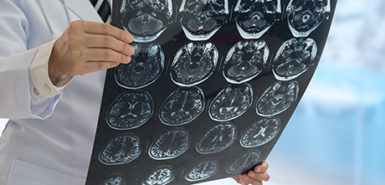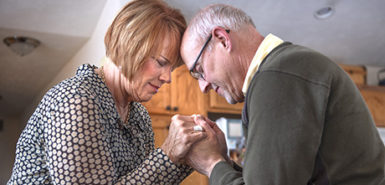
In the United States today, stroke is the fifth-leading cause of death.
And although the risk of stroke increases with age, it’s not just a threat for seniors. In 2009, a third of people hospitalized for stroke were younger than 65 years old, according to the Centers for Disease Control and Prevention.
So what can we do to reduce our chances of having a stroke?
Omran Kaskar, DO, is a vascular neurologist with Spectrum Health Medical Group. He thinks of stroke prevention in three stages: avoiding a stroke; minimizing the impact of a stroke if it happens; and preventing a recurrence.
Here are Dr. Kaskar’s tips as they relate to these three stages:
1. Prevent it altogether
Control your risk factors.
The best way to prevent a stroke is to take care of your general health and keep your stroke risk factors in check, Dr. Kaskar said. Three of the biggies are high blood pressure, diabetes and cholesterol.
Work with your primary care doctor to get these things under control. Medications, exercise and dietary changes can all play a part in keeping you stroke free.
2. Minimize the impact
Recognize the warning signs—and take action.
If a stroke does occur, you need to act fast to minimize brain damage. “Time is the biggest thing that we have working against us, so the sooner the patients come to the (emergency department), the better the chances of their improving are,” Dr. Kaskar said.
It’s essential to know the major symptoms of stroke—including weakness on one side of the body, face drooping on one side, loss of vision, and slurred or strange speech—and to call 911 if you see any of these signs.
Take note of the time the signs started—this information is important for doctors. So is the question of whether the patient is on blood thinners, such as Coumadin, Eliquis, Xarelto or Pradaxa, Dr. Kaskar said.
Get to a certified stroke center.
If someone comes to the hospital in the midst of having a stroke, doctors may be able to intervene and stop the stroke in its tracks. At the Spectrum Health stroke centers, experts in neurology, neuroradiology, neurosurgery, and neurointervention work together to identify the cause of a stroke and choose the right course of action.
Clot-busting medication is one option. Delivered by IV drip, these medicines can dissolve a blood clot that’s causing a stroke and help restore blood flow to the brain.
“The sooner we can administer IV clot-busting agents, the better,” Dr. Kaskar said. Getting started within three hours of the first symptoms is best.
Advanced catheter technology is another intervention possibility for some acute stroke patients. When there’s a large blood clot in part of the brain, a neurointerventionalist can insert a catheter into a blood vessel in the groin “and go all the way up into the brain (to) fish out a clot,” Dr. Kaskar said.
Although endovascular catheters have been around for a while, today’s newer devices yield much better results.
“We know now that if we can get someone to the table … within six hours at least—and there are some cases where they can go out further—then we can reduce the burden of stroke and improve their outcomes dramatically,” Dr. Kaskar said.
3. Prevent the reoccurrence
Identify the cause.
As a patient recovers from a stroke, the neurologist’s first concern is what triggered it.
“We always have to figure out what caused the stroke to further prevent it,” Dr. Kaskar said.
He starts by screening his stroke patients for carotid artery disease and cardiac arrhythmias—especially atrial fibrillation, or aFib. If aFib is the problem, he prescribes a blood thinner.
Control the risk factors.
To decrease the risk of future strokes, patients and their doctors need to work together to get underlying risk factors under control. This means:
- Controlling blood pressure
- Controlling cholesterol
- Controlling diabetes
- Following the DASH diet or the Mediterranean diet
- Making lifestyle changes: regular exercise, no smoking
Patients should also build a good relationship with their primary care doctor to ensure they’re meeting all of these goals, Dr. Kaskar said.
 /a>
/a>
 /a>
/a>
 /a>
/a>
Thank you Health Beat team for this great article. My dad recently had a stroke and is recovering well, but this is good information for my parents and for everyone. Make sure your loved ones know the signs!